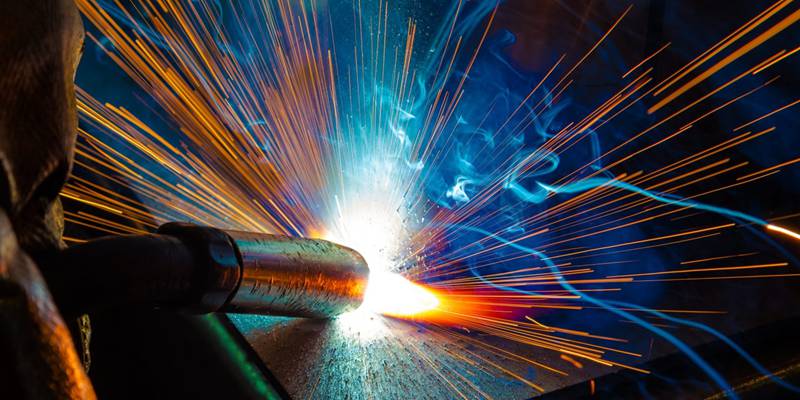The Ultimate Overview to Welding WPS Procedures: A Thorough Review for Welders
In the elaborate world of welding, Welding Procedure Specs (WPS) act as the backbone of guaranteeing top quality, consistency, and security in welding procedures. Understanding the nuances of producing, carrying out, and monitoring WPS procedures is essential for welders looking to raise their craft and fulfill sector requirements. As we delve right into the numerous parts of a WPS and check out the ins and outs of certification and certification, we will discover the crucial duty these procedures play in the world of welding. Allow's get started on a trip to unravel the complexities and value of WPS procedures in welding practices.
Value of WPS Procedures
Comprehending the importance of Welding Treatment Requirements (WPS) procedures is vital for guaranteeing the top quality and integrity of bonded structures. WPS procedures act as a roadmap for welders, laying out the required actions, criteria, and products required to accomplish an audio weld. By adhering to WPS standards, welders can make certain uniformity in their work, leading to trusted and structurally sound welds.
One of the main reasons WPS procedures are essential is their duty in maintaining weld high quality and stability. Following the specified welding criteria and techniques described in the WPS aids avoid problems such as porosity, splitting, or insufficient blend, which can compromise the stamina and durability of the weld. Additionally, WPS treatments are vital for guaranteeing conformity with market requirements and codes. By complying with recognized WPS guidelines, welders can demonstrate that their work fulfills the needed needs for safety and security and high quality, offering assurance to customers, inspectors, and regulative bodies. Fundamentally, the importance of WPS procedures can not be overemphasized, as they are basic to accomplishing constant, high-grade welds that fulfill industry requirements and specs.

Elements of a WPS
A Welding Treatment Specification (WPS) normally consists of important parts that detail the certain needs for implementing a weld, guaranteeing uniformity and high quality in the welding process. The vital elements of a WPS include essential variables such as base metals, filler metals, preheat and interpass temperatures, welding processes, securing gases, welding placements, and post-weld heat treatment needs.
Base steels refer to the materials being signed up with, while filler metals are utilized to fill up the void between the base metals throughout welding. Preheat and interpass temperature levels are critical for regulating the warm input and stopping concerns like splitting or distortion. The welding procedure details the particular technique to be used, whether it's gas steel arc welding (GMAW), protected metal arc welding (SMAW), or one more technique. Protecting gases protect the weld swimming pool from climatic contamination. Welding settings define the positionings in which welding can be done. Post-weld warm therapy may be needed to eliminate tensions and enhance the weld's residential or commercial properties. An extensive understanding of these parts is critical for producing a detailed and reliable WPS.

Qualification and Accreditation
Having developed the essential elements of a Welding Procedure Spec (WPS), the focus currently moves towards the critical facets of qualification and accreditation in welding techniques.

Certification, on the various other hand, is the formal acknowledgment of a welder's credentials by a relevant accreditation body or company. Welding accreditations are usually based on the certain welding procedures, products, and placements a welder is certified to collaborate with. Holding a valid welding accreditation demonstrates that a welder fulfills market standards and is skilled to do welding jobs to the needed specs.
Creating a WPS
To establish a Welding Procedure Spec (WPS) that fulfills industry standards, careful factor to consider of welding processes, materials, and functional parameters is essential. The very first action in producing a WPS is to identify the welding process to be utilized, such as gas metal arc welding (GMAW) or secured metal arc welding (SMAW)

Implementing and Monitoring WPS
Upon settling the extensive Welding Procedure Requirements (WPS) that meticulously information welding processes, materials, functional parameters, and high quality assurance procedures, the emphasis changes to efficiently implementing and monitoring the well established procedures. Execution entails ensuring that all welders entailed in the job are familiar with the WPS and follow it diligently during the welding process. Reliable application and surveillance of the WPS are vital for making certain the stability, stamina, and security of the bonded joints, eventually contributing to the overall success of the welding task.
Final Thought
In conclusion, understanding and adhering to Welding Procedure Specs (WPS) is important for welders to make sure quality, consistency, and security in their work. By recognizing the components of a WPS, acquiring proper certifications and certifications, producing comprehensive procedures, and carrying out and checking them properly, welders can enhance their abilities and efficiency in welding methods. Following WPS treatments is vital for creating top quality welds and meeting industry criteria.
In the detailed globe of welding, Welding Procedure Requirements (WPS) serve as the backbone of ensuring high quality, consistency, and security in welding procedures. The welding process lays out the details strategy to be utilized, whether it's gas steel arc welding (GMAW), protected metal arc welding (SMAW), or one more technique.To create a Welding Procedure Requirements (WPS) that satisfies market criteria, careful consideration of welding processes, materials, and functional parameters is crucial. The first action in developing a WPS is to determine the welding process to be used, such as gas metal arc welding (GMAW) or shielded metal arc welding (SMAW)Upon wrapping up the detailed Welding Treatment Requirements (WPS) that carefully information welding processes, materials, read more operational specifications, and high quality assurance measures, the focus changes to effectively carrying out and keeping track of the recognized procedures.